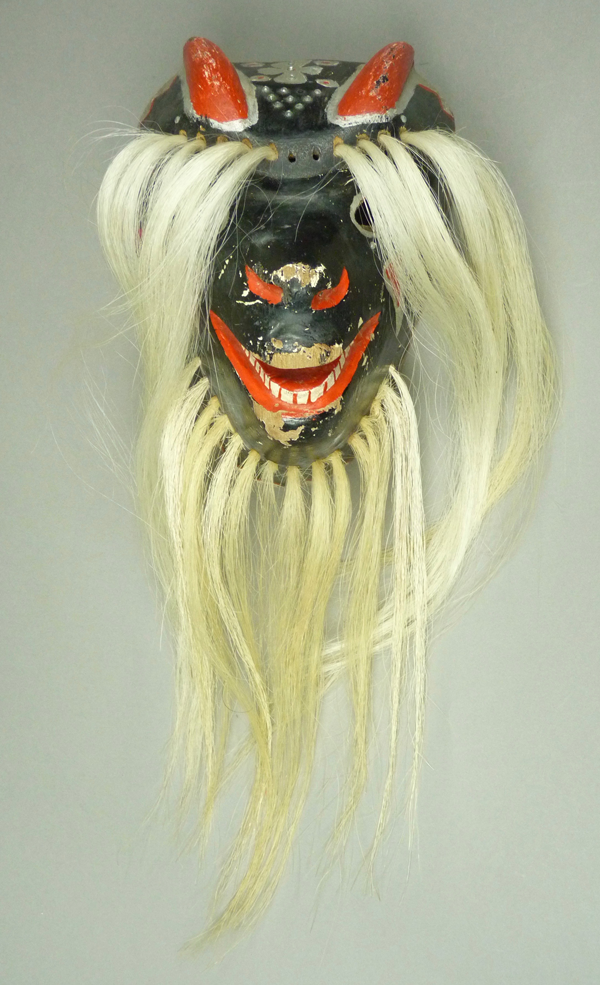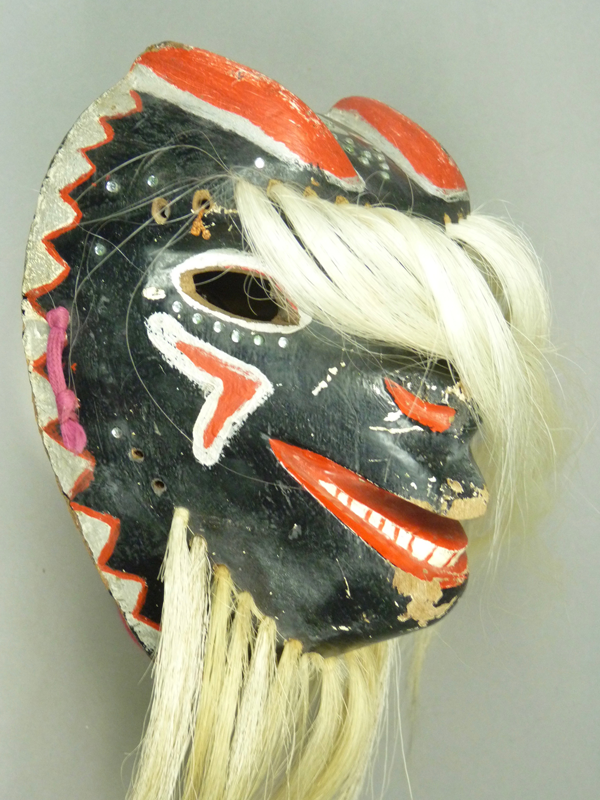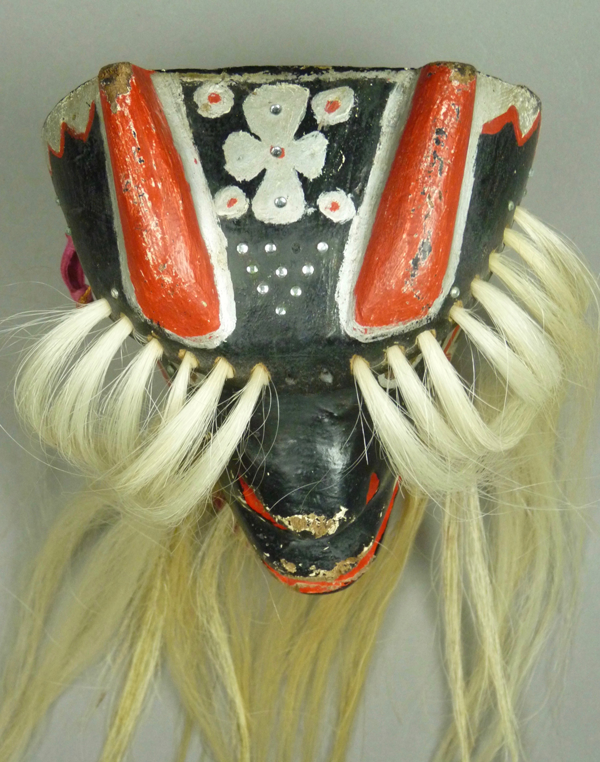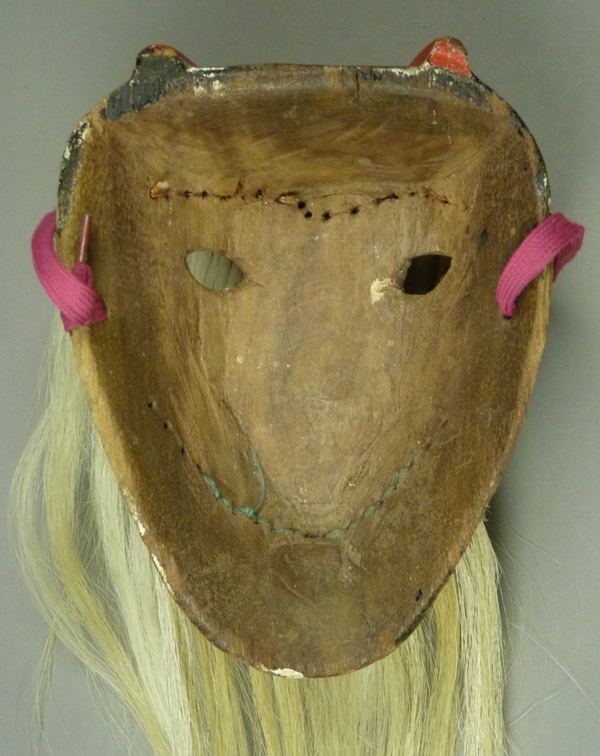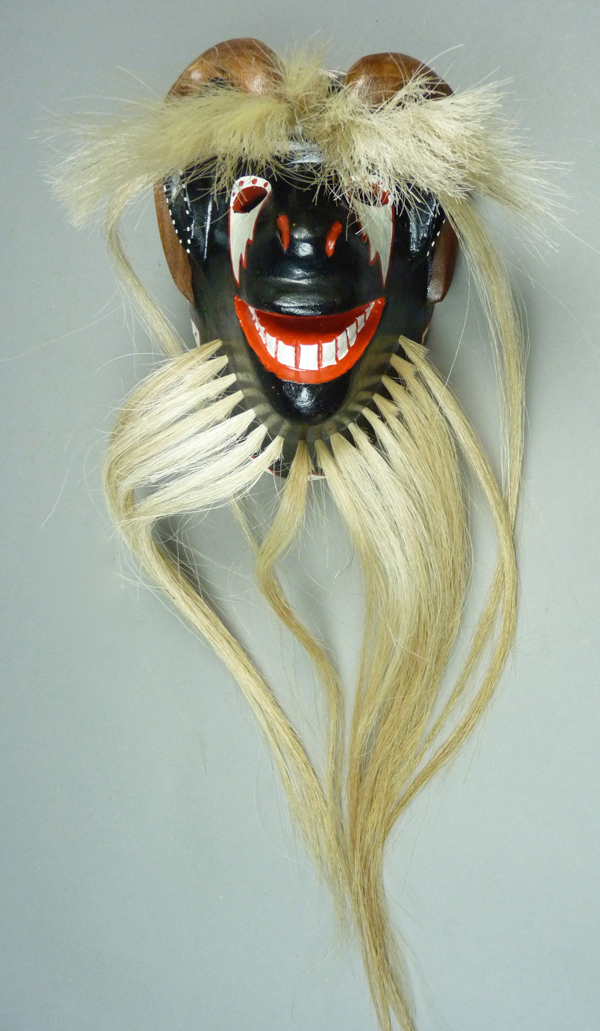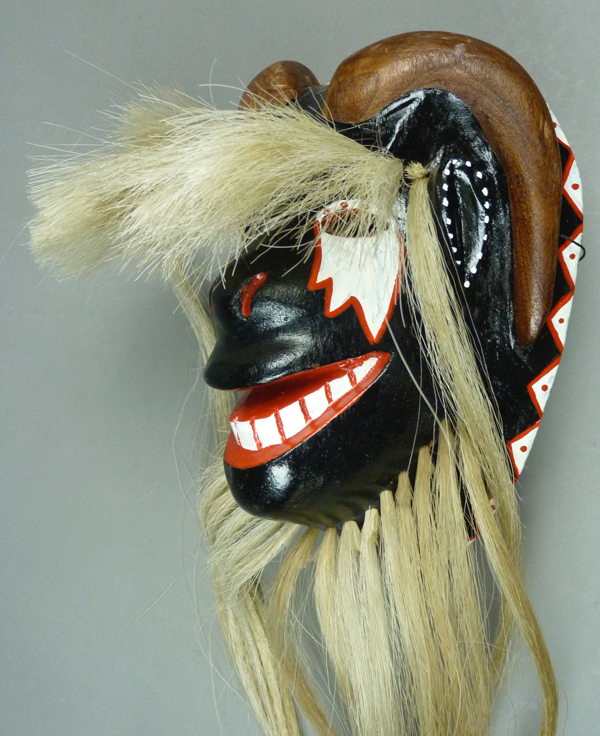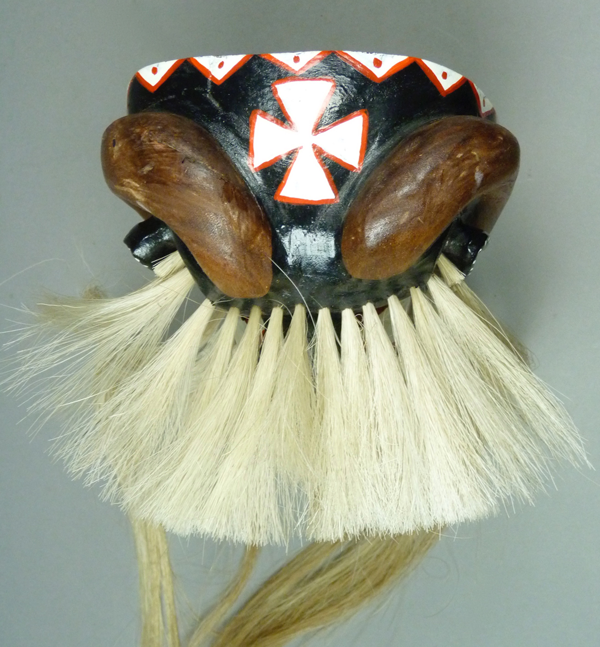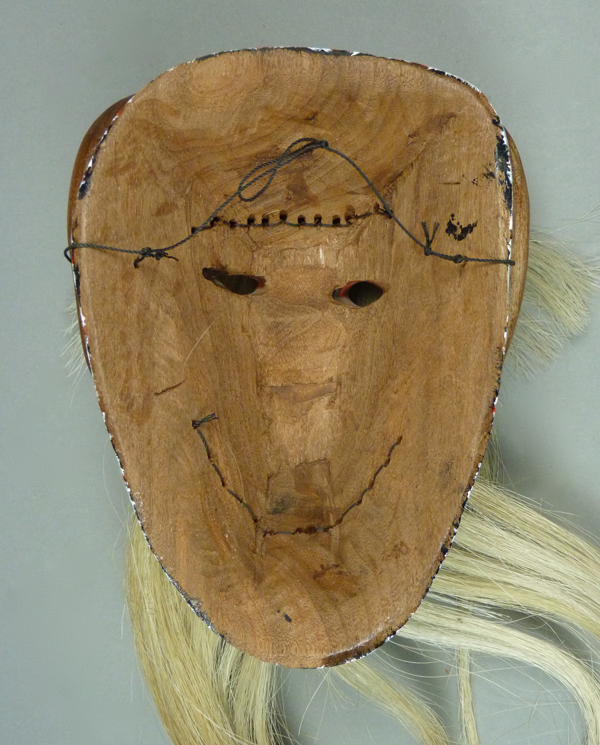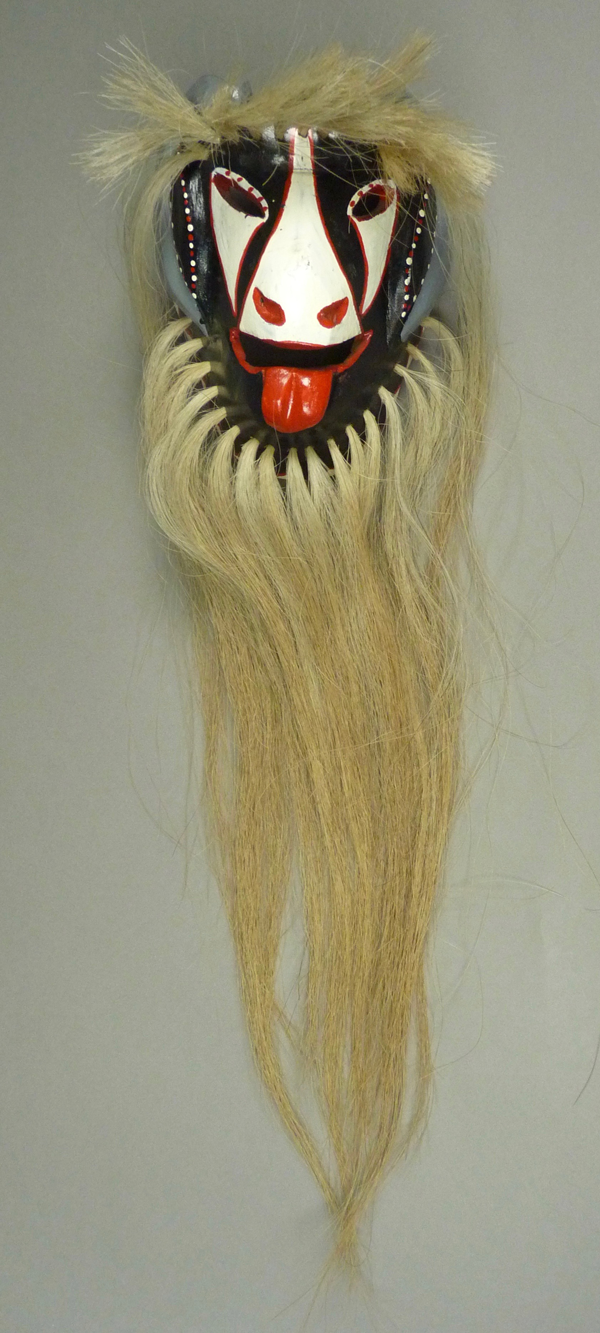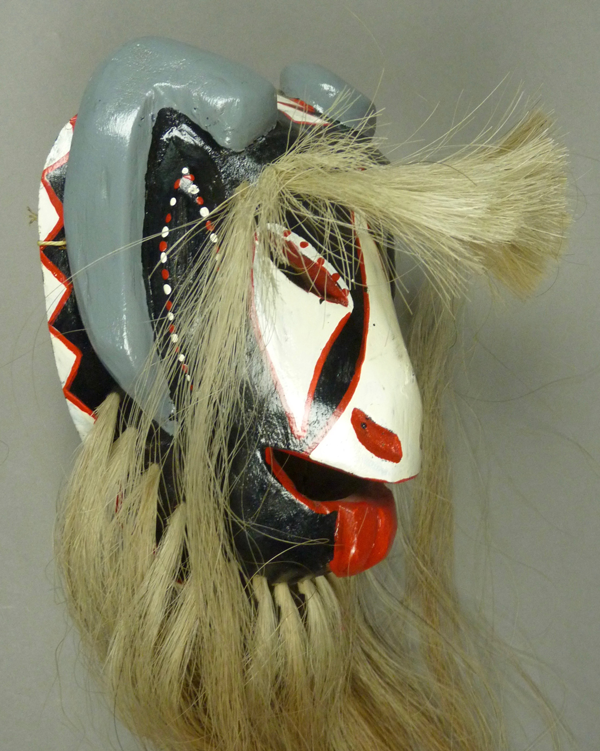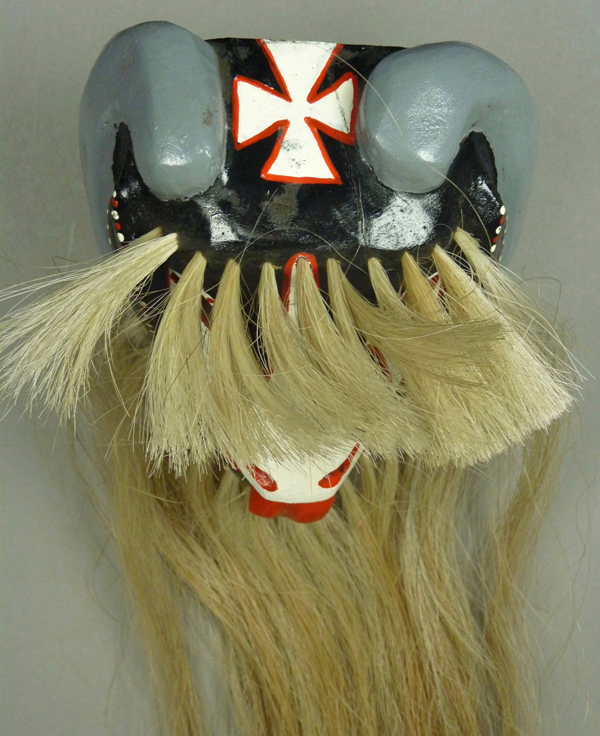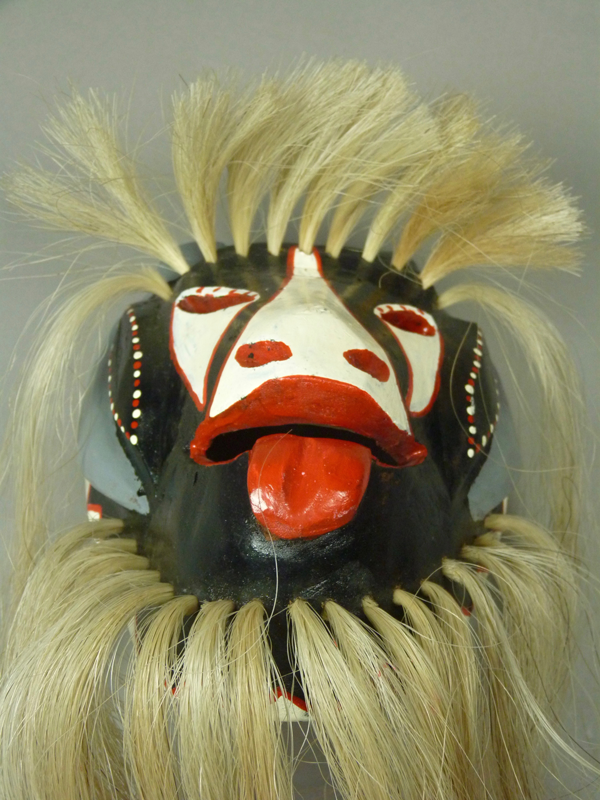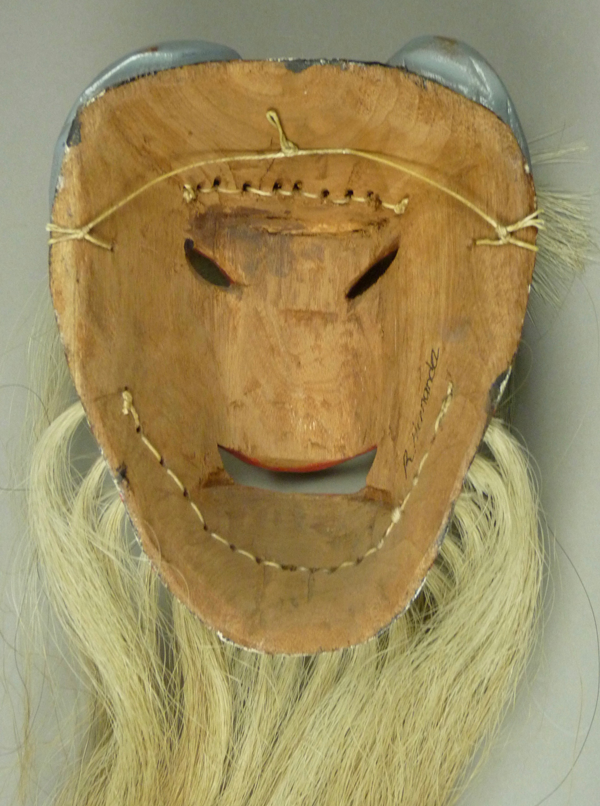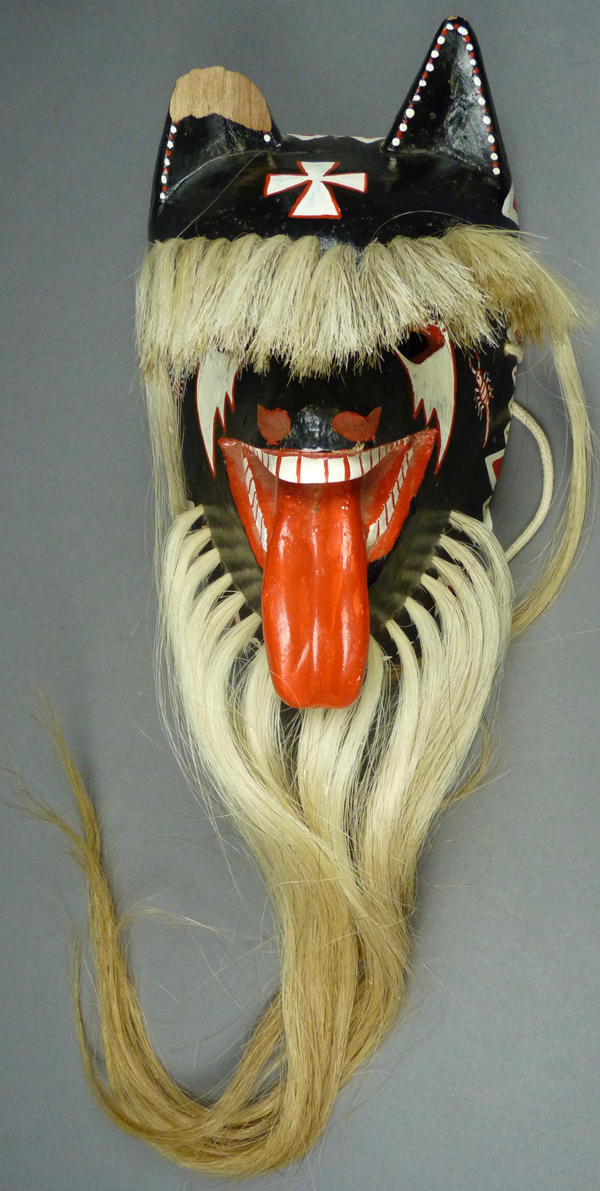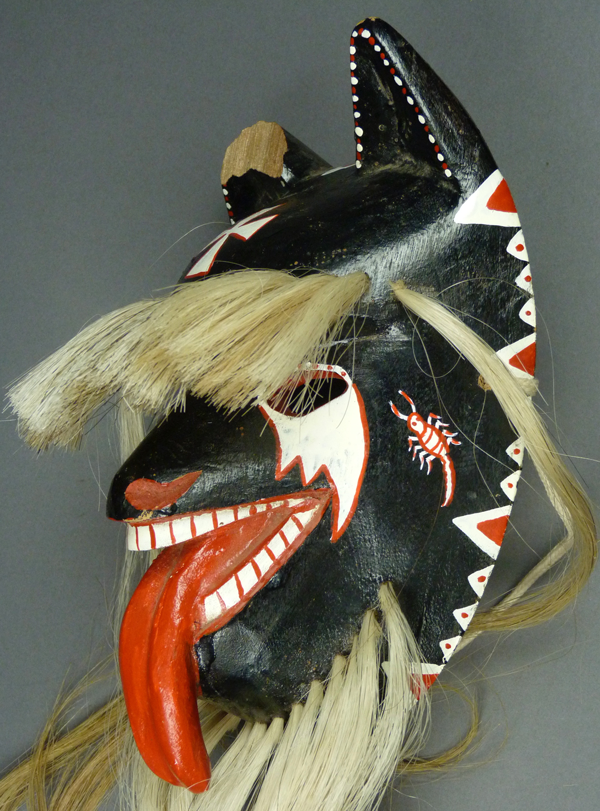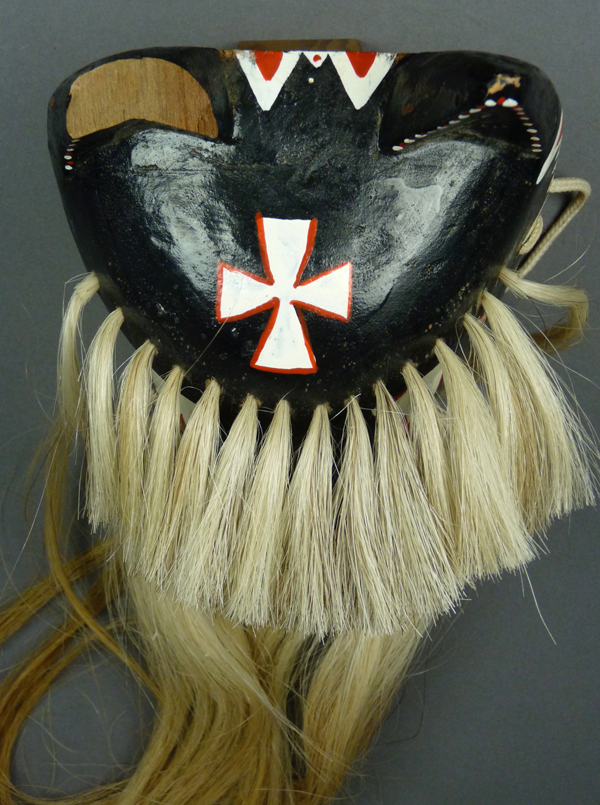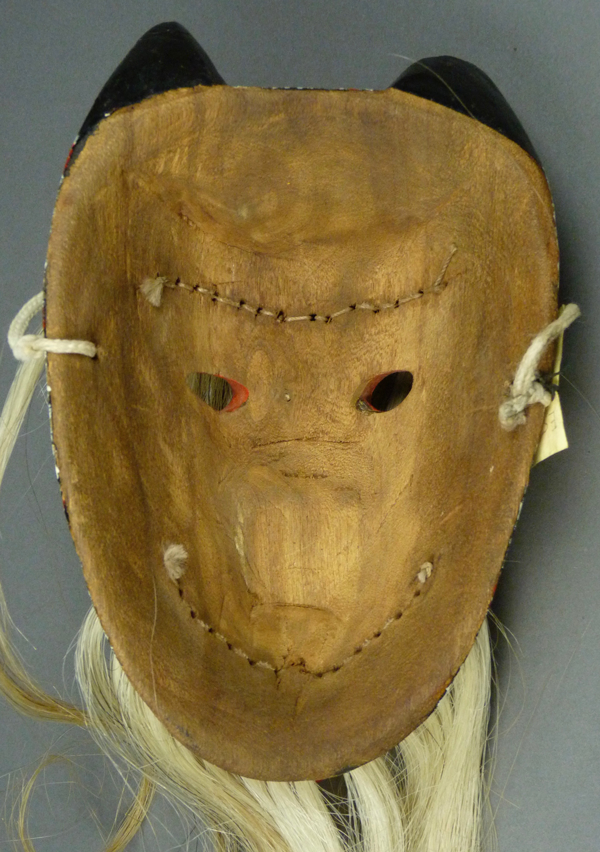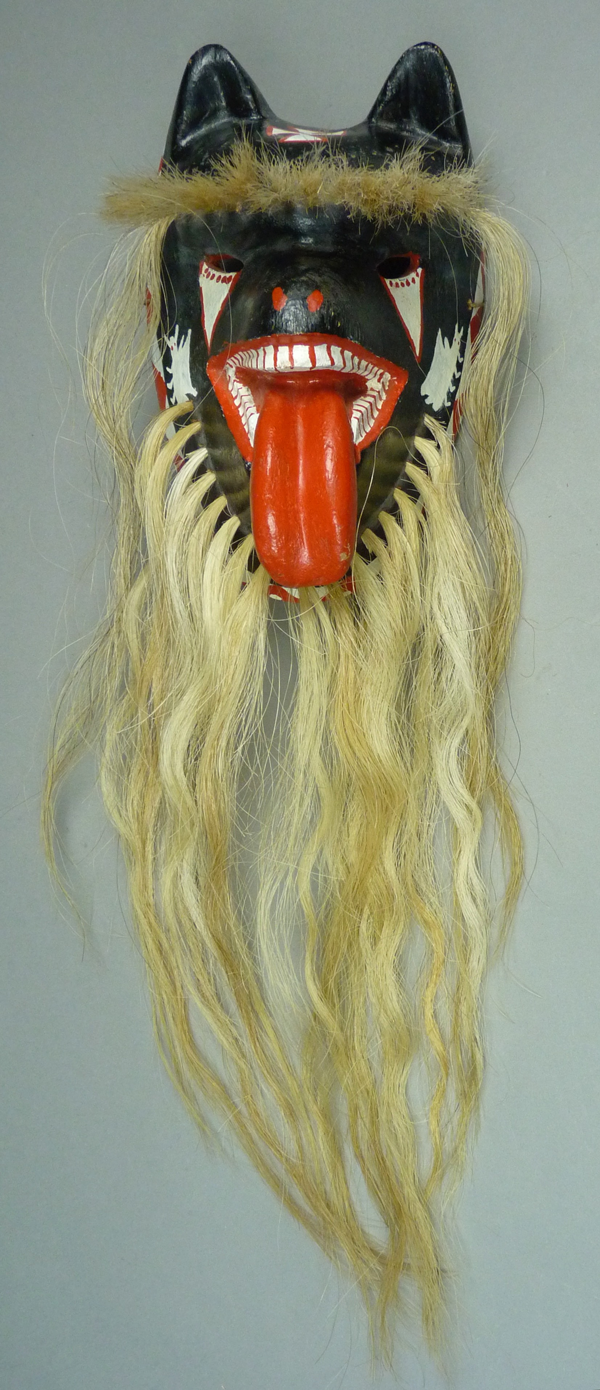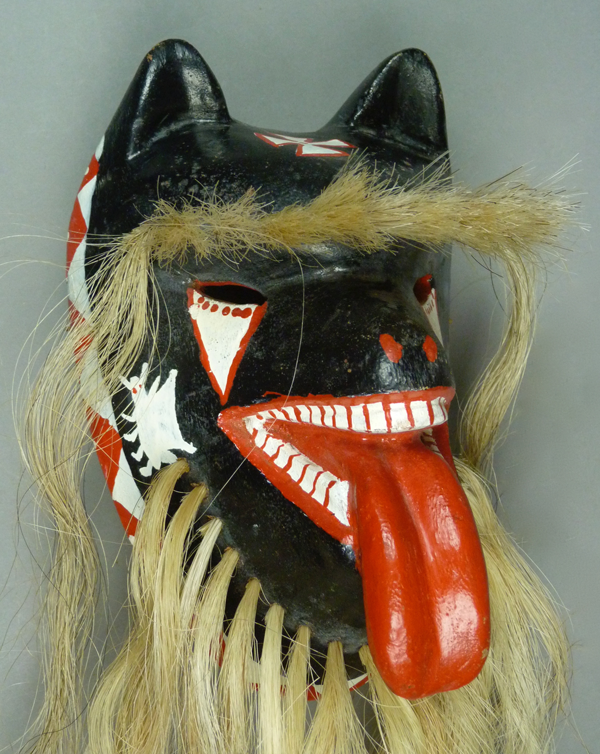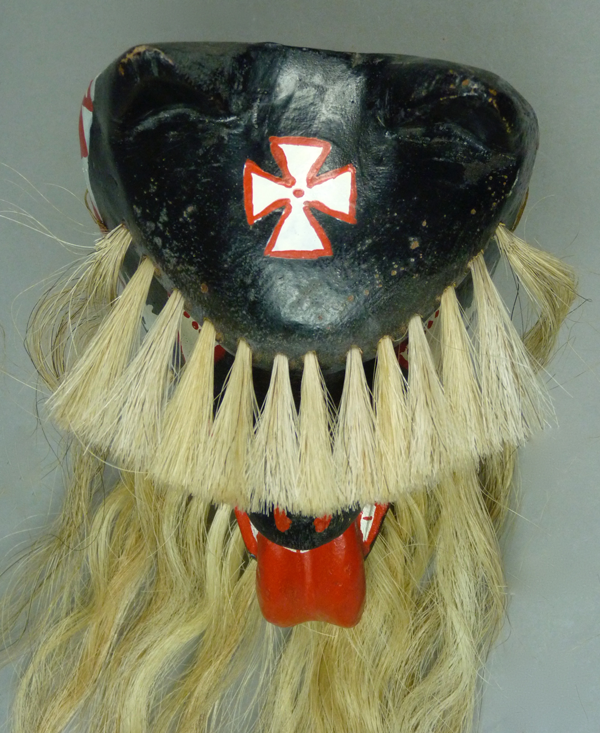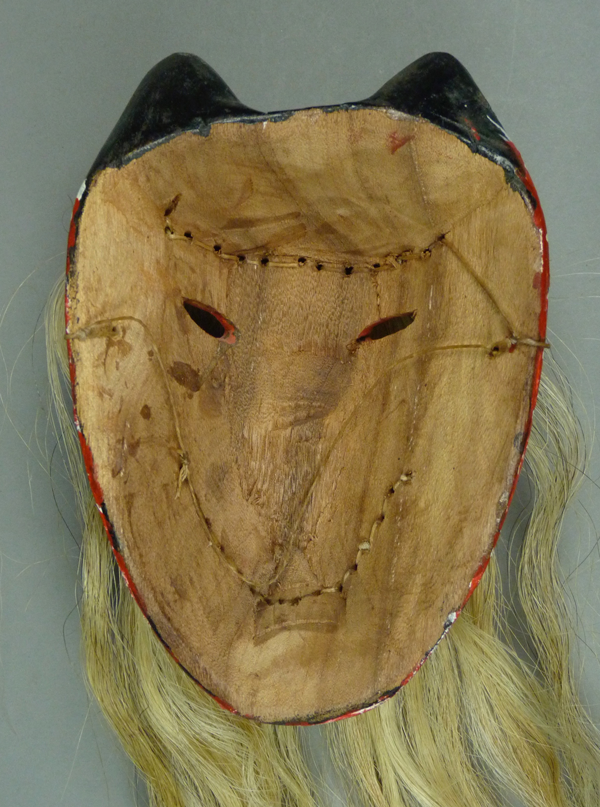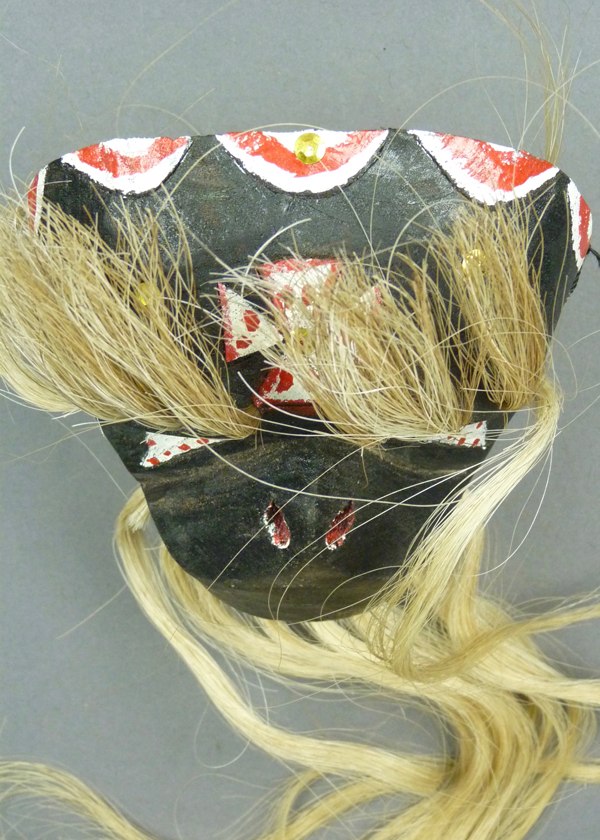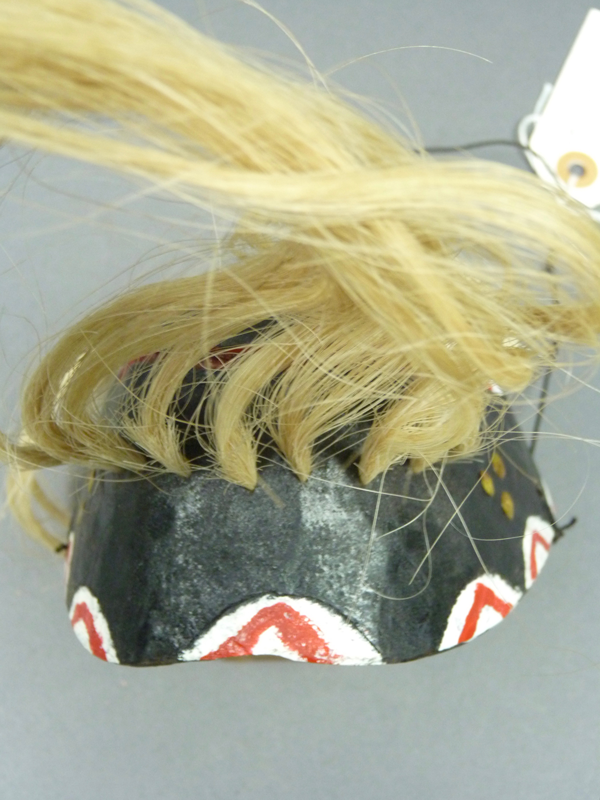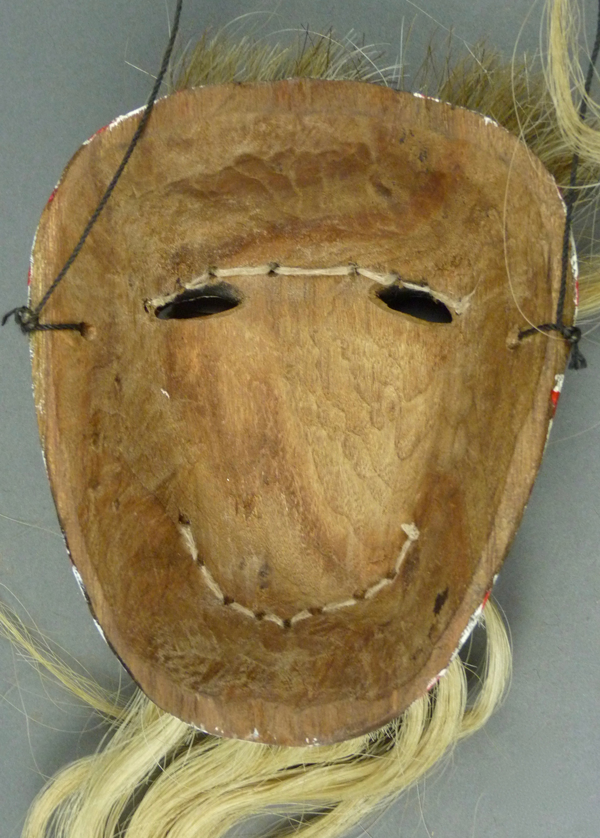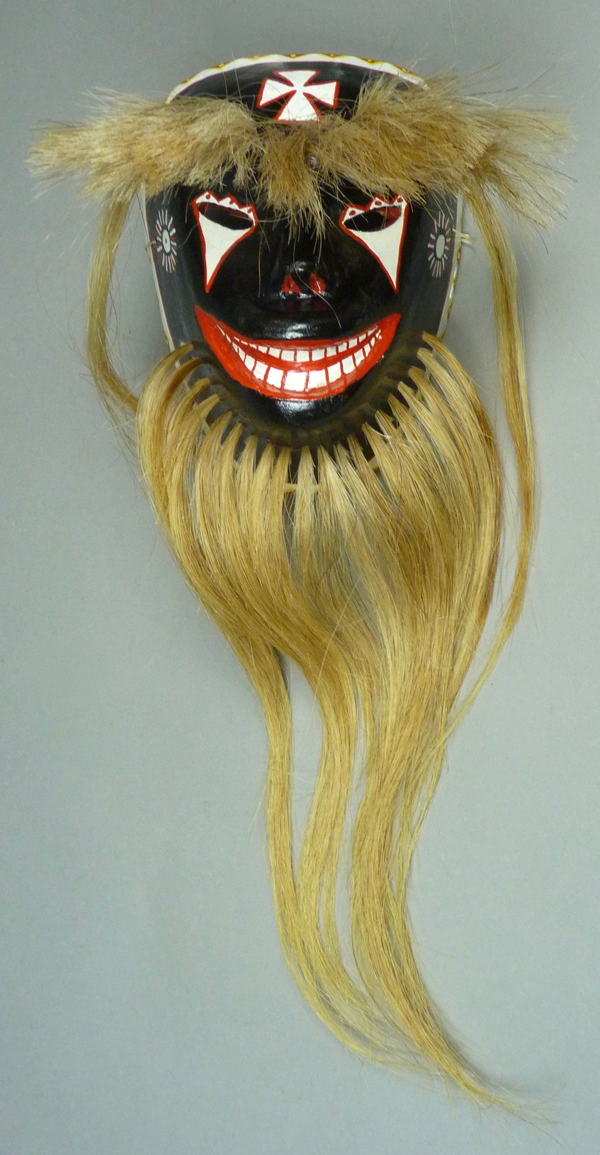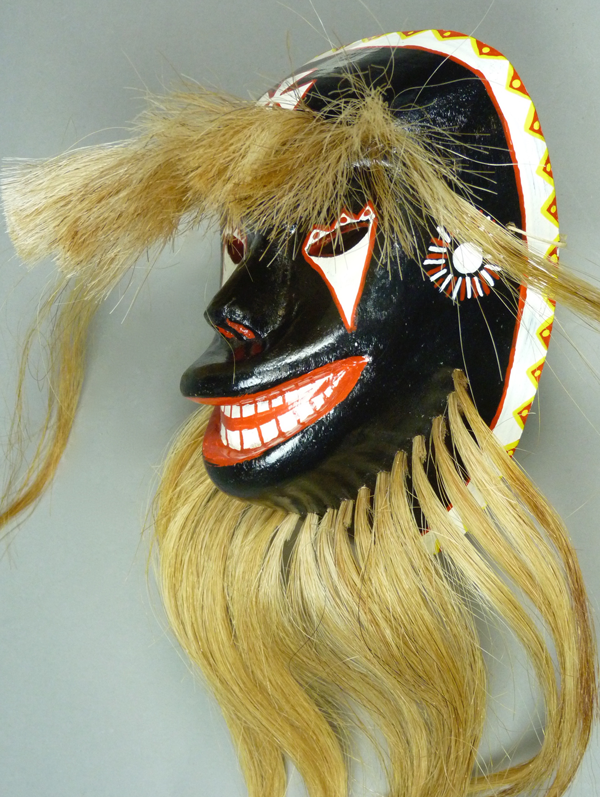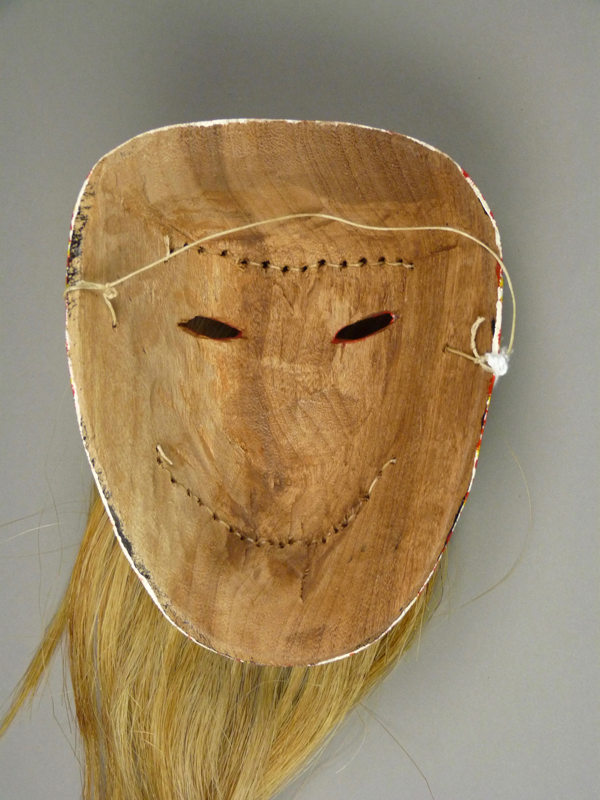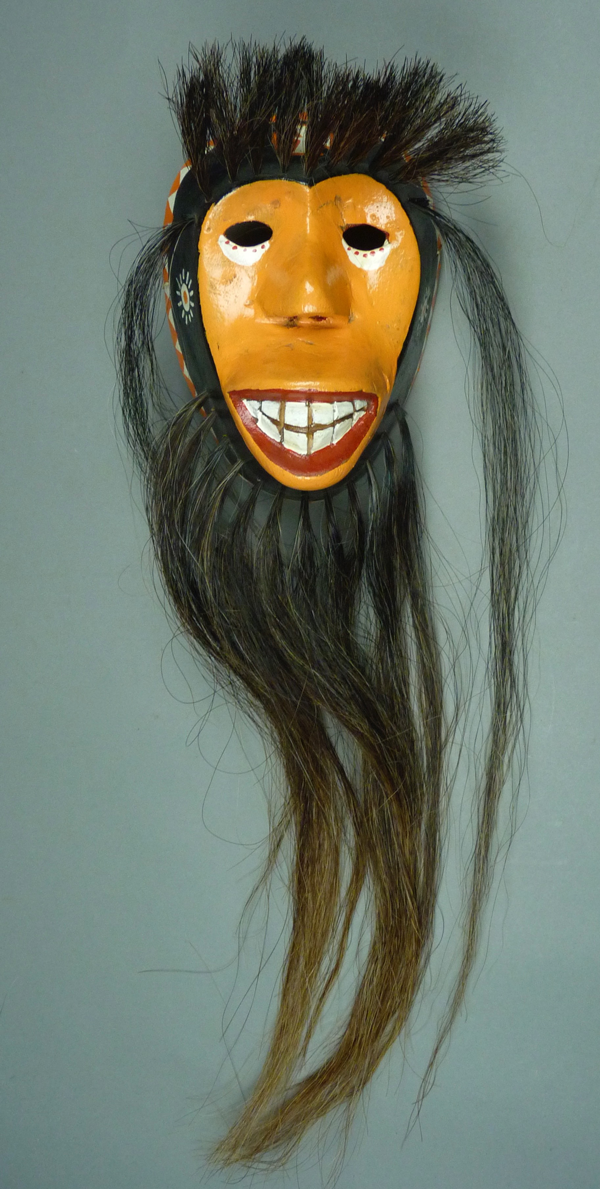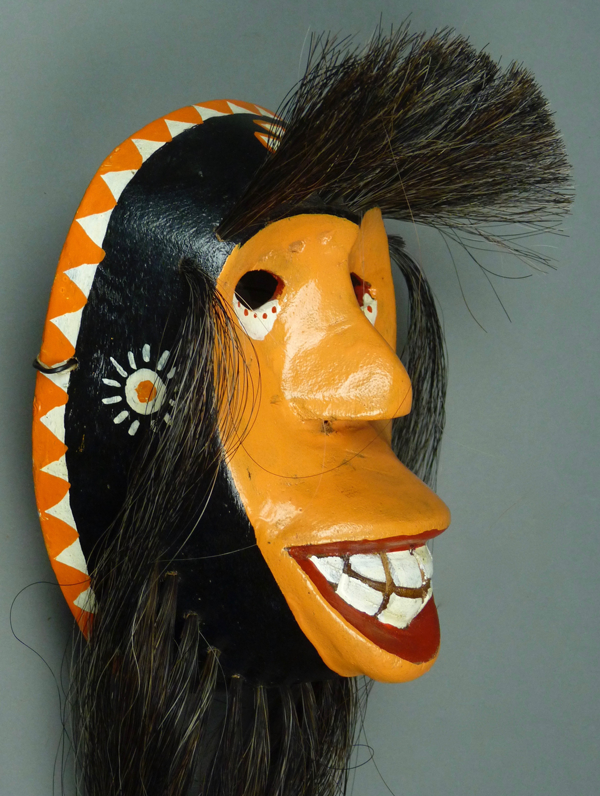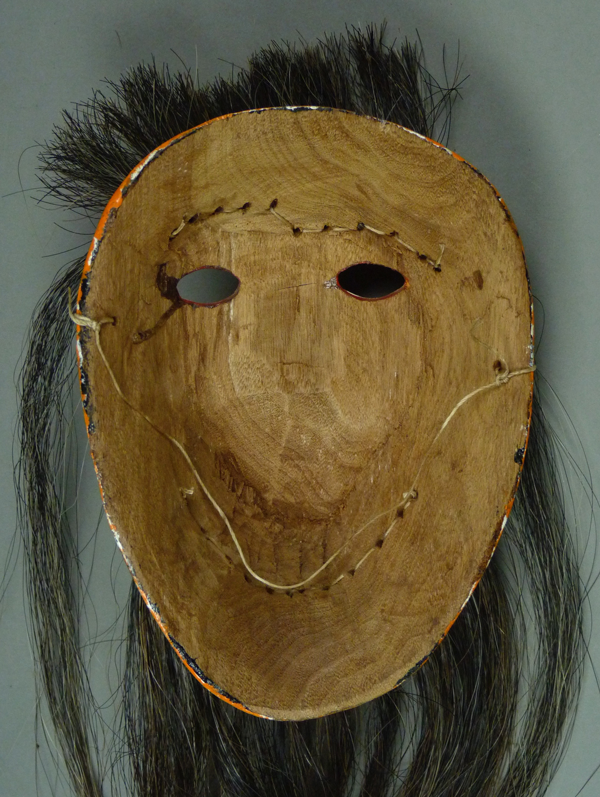Today I have the great pleasure of showing some animal masks by Ruben Hernández. Some belong to Mahina Drees Burns and others are from my collection. I will start with three goats. The first, which is obviously worn, had been in the collection of my friend Tom Kolaz and I bought it from him in 2014. It was made in the 1980s.
This mask has obvious wear on the face, demonstrating that rough treatment can occur in the revelry of a fiesta.
Observe the careful attention Ruben pays to the hair on his masks—many thick bundles. At least four of the brow bundles are missing.
The horns are carved in high relief.
There is no chin cross. This mask is 7½ inches tall, 5¼ inches wide, and 4 inches deep.
The back demonstrates heavy staining from use. A shoelace serves as the strap.
The second goat mask was new and undanced when I bought it on EBay™ in 2005. I recall that a dealer offered a series of masks by this carver, and I only purchased the best of them.
Yaqui Goat Pascola masks can have either straight or curled horns, and these can be either carved in relief or merely painted on the surface without any change in contour. In this instance the ears as well as the horns are carved in relief.
This mask demonstrates Ruben’s superlative diligence in the installation of the hair bundles, and also illustrates his typical use of color accents to enhance normal painted elements.
This mask is 7½ inches tall, 5¼ inches wide, and 4 inches deep, just the same measurements as the last.
There is no evidence of use and the mask has only a flimsy strap for hanging.
The third mask came from the same seller as the last, and has similar features.
This mask has an extended tongue.
We see Ruben’s typical cross.
As usual for Ruben, there is no chin cross.
Also as usual, the hair is terrific, with many plump bundles of horsetail. This mask is 7 3/8 inches tall, 5 7/8 inches wide, and 3½ inches deep.
In this case, the name of the carver was written on the back—R Hernandez. There is no evidence of use.
Next I will compare two canine Pascola masks by Ruben which were virtually identical when new. The first of these was collected by Barney and Mahina as a mask carved by Ruben Hernández in 2001 and danced by Tomas Estrella.
One of the goat masks also has these triangles under the eyes with jagged lower edges.
In this example, the broken ear is associated with very mild scuffing on the tip of the other ear; did the dancer fall? The insects painted on the cheeks are scorpions.
The tongue is a dramatic feature of this mask and the next.
We see Ruben’s characteristic attention to the hair.
This mask shows clear evidence of having been danced, and the color of the broken edge of the ear stands in sharp contrast to the stained rim on the back.
The next mask, which was probably never danced and has intact ears, was purchased from the Gary Collison collection in 2008, after his death. I was surprised to encounter its near duplicate (with the broken ear), eight years later.
I like the painted moths on the cheeks.
These are furrowed tongues. The forehead cross is so characteristic of Ruben’s hand.
This mask is 8 inches tall, 5½ inches wide, and 3¾ inches deep.
I see no staining from use.
I will end this post with three Chango or Monkey masks by Ruben, all very different from one another. The first was collected by Barney and Mahina Burns in 2007, after six years use. It was said to have been carved by Geraldo Barcelon, but Tom Kolaz was quick to spot Ruben’s characteristic painting style and you have already seen how different are the Chango masks of Gerardo, in my post of December 5, 2016.
This is a very distinctive face for a monkey mask.
The painting style tells the tale. Then again, this mask also illustrates the range in quality of Ruben’s masks; this one is well carved but the paint is less precise. I am not complaining, as I really like the unusual carving.
This view simply documents that there is no chin cross.
One can readily see that this mask was danced.
The next Chango, which is more typical of Ruben’s style, is another of the group that I selected from an EBay merchant in 2005. It had been attributed to Martin Ramírez Urbaneso. After last week’s post, Tom Kolaz informed me that Ruben’s full name is Rubén Hernández Urbalejo. All these names!
It is well carved and very well haired.
This mask is 7¼ inches tall, 5½ inches wide, and 3½ inches deep.
The back, which is also well carved to Ruben’s usual standard, shows no sign of use.
The last Monkey mask, another that I purchased from the Gary Collison collection in 2008, was said to have been carved by Antonio Rosas. It has much in common with Ruben’s masks, yet it is somewhat different from the other two Changos. Maybe Ruben has different product lines for different markets.
The teeth are defined by carved gaps, while Ruben is usually content to paint the lines between the teeth. The heart-shaped face is also distinctive, and benefits from the choice of such vivid orange paint.
This mask has been haired with very dark horsetail.
This mask is 7½ inches tall, 5¼ inches wide, and 3½ inches deep.
The shape of the back is also slightly different from those above. There is no evidence of use.
I hope that you have enjoyed seeing these masks by Ruben Hernández and perhaps others. Next week I will introduce you to the masks of Frank “Chico” Martínez of Old Pascua, a Yaqui barrio within the city of Tucson, Arizona.

